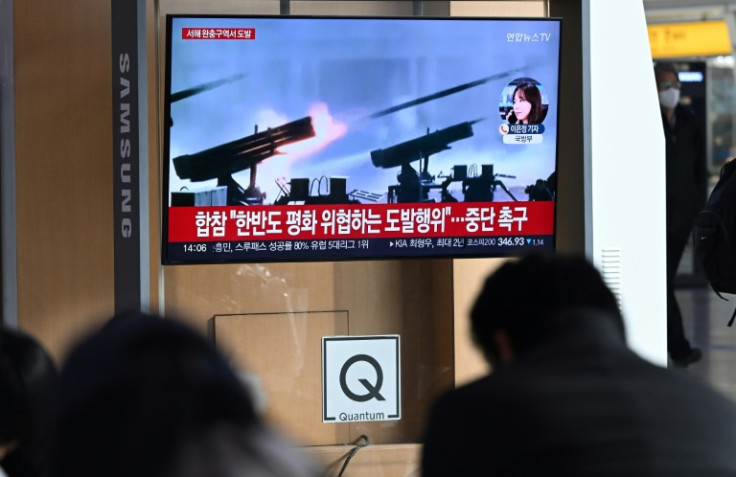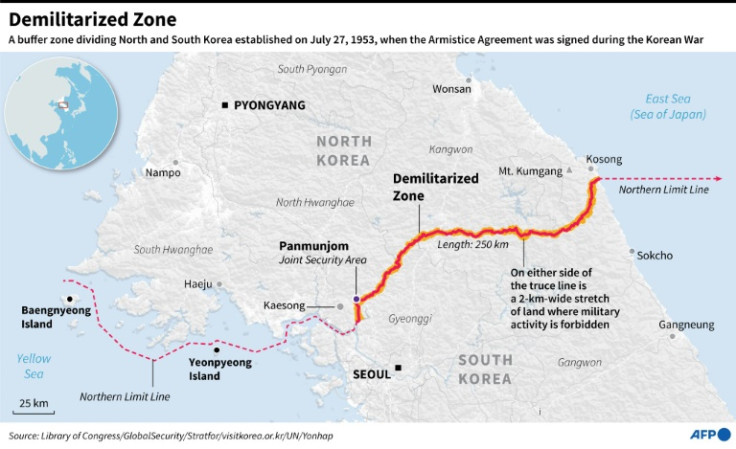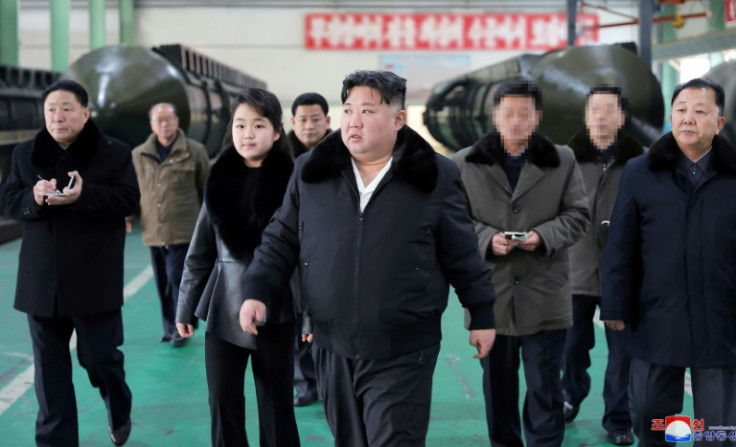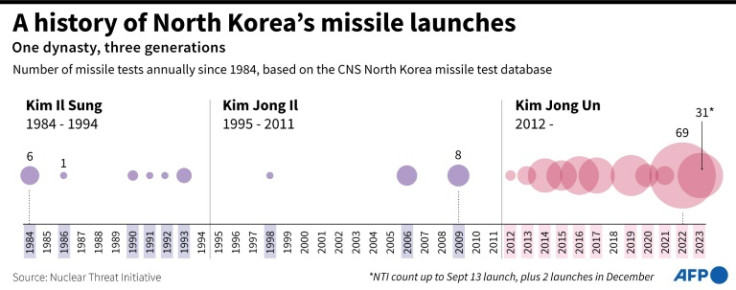N. Korea Fires Artillery Shells Near S. Korean Islands: Seoul

North Korea fired an artillery barrage near two South Korean border islands Friday, Seoul's defence ministry said, prompting a live-fire drill from the South Korean military.
Residents of both islands were ordered to evacuate and ferries were suspended as South Korea held a live-fire exercise after the North's barrage -- one of the most serious military escalations on the peninsula since Pyongyang fired shells at one of the same islands in 2010.
Friday's live firing followed repeated warnings from Kim Jong Un's regime in Pyongyang that it was prepared for war against South Korea and the United States.
Seoul's defence ministry said the North's military fired "over some 200 rounds" of artillery shells on Friday morning near Yeonpyeong and Baengnyeong, two sparsely populated South Korean islands that are just south of a defacto maritime border between the two sides.
The shells landed in the so-called buffer zone along the border, created by a 2018 tension-reducing deal, which fell apart in November after Kim's spy satellite launch.
Resuming artillery fire within the buffer zone "is a provocative act that threatens peace on the Korean Peninsula and escalates tensions," Seoul's defence minister Shin Won-sik said.
In response to Pyongyang's actions, Seoul's military will take "immediate, strong, and final retaliation -- we must back peace with overwhelming force," he added.
Pyongyang's major ally and benefactor China called Friday for "restraint" from all sides.
"We hope that all relevant parties maintain calm and restraint, refrain from taking actions that aggravate tensions, avoid further escalation of the situation, and create conditions for the resumption of meaningful dialogue," foreign ministry spokesman Wang Wenbin told reporters.
Yeonpyeong, which has around 2,000 residents, is about 115 kilometres (70 miles) west of South Korea's capital, Seoul.
Baengnyeong, with a population of 4,900, is about 210 kilometres west of Seoul.
Local officials on both islands told AFP that residents had been told to evacuate, describing the order as a "preventative measure" ahead of the South Korean military drill. The order was lifted soon after, the Yonhap news agency reported.
One resident of the island said they were "shaking in fear" at the barrage.
"At first I thought it was the shells fired by our own military... but was told later it was by North Korea," Kim Jin-soo, a Baengnyeong island resident told local broadcaster YTN.
In November, Seoul partially suspended the 2018 military accord to protest Pyongyang's putting a spy satellite into orbit, prompting the North to scrap it completely.
"The nullification of the (accord) increases the possibility of military clashes in the border areas," Yang Moo-jin, president of the University of North Korean Studies in Seoul, told AFP.
He added that "the evacuation of our residents raises psychological and security concerns, which can ultimately destabilise the economy of South Korea".
In 2010, in response to a South Korean live-fire drill near the sea border, the North bombarded Yeonpyeong island killing four South Koreans -- two soldiers and two civilians.
That was the first attack on a civilian area since the 1950-53 Korean War.
The South returned fire, with the resulting exchange lasting more than an hour, as the two sides traded more than 200 shells, sparking brief fears of a full-fledged war.
Relations between the two Koreas are currently at one of their lowest points in decades, after Kim enshrined the country's status as a nuclear power into the constitution while test-firing several advanced ICBMs.
At Pyongyang's key year-end policy meetings, Kim warned of a nuclear attack on the South and called for a build-up of the country's military arsenal ahead of armed conflict that he warned could "break out any time".
In an effort to deter Pyongyang, Washington deployed a nuclear-powered submarine in the South Korean port city of Busan late last year and flew its long-range bombers in drills with Seoul and Tokyo.
The North has described the deployment of Washington's strategic weapons, such as B-52 bombers, in joint drills on the Korean peninsula as "intentional nuclear war provocative moves".
On Friday, KCNA said Kim called for the ramping-up of missile launcher production "given the prevailing grave situation that requires the country to be more firmly prepared for a military showdown with the enemy."
His comments came after the White House accused North Korea of providing Russia with ballistic missiles and missile launchers that were used in recent attacks on Ukraine, in what the US said was a major escalation of Pyongyang's support for Moscow.




© Copyright AFP 2025. All rights reserved.





















